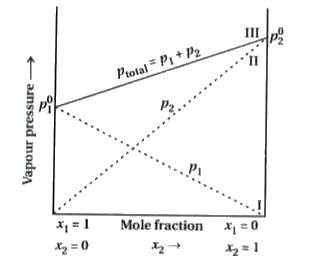Text Solution
Verified by Experts
|
Topper's Solved these Questions
SOLUTIONS
KUMAR PRAKASHAN|Exercise SECTION - A QUESTIONS (SELF - PRACTICE QUESTIONS)|37 VideosView PlaylistSOLUTIONS
KUMAR PRAKASHAN|Exercise SECTION - A QUESTIONS (TRY YOURSELF)|29 VideosView PlaylistSOLUTIONS
KUMAR PRAKASHAN|Exercise SECTION - E MCQs asked in GUJCET/Board Exam|69 VideosView PlaylistSAMPLE QUESTION PAPER
KUMAR PRAKASHAN|Exercise [PART-B] SECTION - C|2 VideosView PlaylistSURFACE CHEMISTRY
KUMAR PRAKASHAN|Exercise SECTION - E (MCQs asked in GUJCET/Board Exams)|52 VideosView Playlist
Similar Questions
Explore conceptually related problems
Knowledge Check
A
B
C
D
Submit
A
B
C
D
Submit
A
B
C
D
Submit
Similar Questions
Explore conceptually related problems
KUMAR PRAKASHAN-SOLUTIONS -SECTION - A QUESTIONS
- Explain solubility of solution formed by gaseoius solute and liquid so...
03:21
|
Play - Write and explain Henry's law. Also write its application.
02:46
|
Play - Derive an equation for solution which shows relation between total pre...
06:13
|
Playing Now - Explain ''Solubility of gaseous solute and vapour pressure of liquid s...
02:44
|
Play - Explain vapour pressure of solutions of solids in liquids.
05:23
|
Play - Explain ideal solution.
03:54
|
Play - What are non ideal solutions ? Explain non ideal solutions with positi...
04:02
|
Play - What is azeotropes ? Explain their types.
04:52
|
Play - What are colligative properties ?
01:42
|
Play - Write Raoult's law for non - volatile solute and volatile solvent and ...
05:26
|
Play - What is elevation in boiling point ? Explain.
03:14
|
Play - What is molal elevation ? Explain.
04:26
|
Play - What is depression of freezing point ? Explain.
04:00
|
Play - What is molal depression constant (K(f)) ? Derive equation relating K(...
04:57
|
Play - What is semi permeable membrane ? Give examples.
01:36
|
Play - Explain : What is osmosis ? Give example.
02:27
|
Play - What is osmotic pressure ? Explain and derive equation.
03:54
|
Play - Which method is most suitable to determine molecular mass of polymer ?
01:30
|
Play - Explain isotonic solutions.
04:31
|
Play - Explain reverse osmosis and purification of water.
03:35
|
Play
